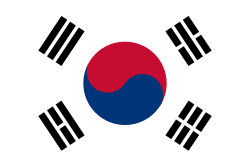
South Korea’s education system is often held up as a model of high achievement and strong public investment. For institutions, employers, and licensing bodies reviewing South Korean credentials, understanding the structure behind those transcripts is essential. Here are ten current, high-level facts that shape today’s education landscape in the Republic of Korea.
- A single-track 6-3-3-4 structure
South Korea follows a unified “6-3-3-4” ladder: six years of elementary school, three of middle school, three of high school, and typically four years of university (or two to three years at junior college). Elementary and middle school are compulsory. (english.moe.go.kr) - Academic year runs March to February
The school year begins in March, with two semesters: March–July and late August–December, followed by winter vacation into February. This differs from the August/September starts seen in many Western systems and is important for interpreting course timing and graduation dates. (english.moe.go.kr) - Play-based national preschool curriculum
Early childhood education is guided by the Nuri Curriculum, a national framework for children ages 3–5 that emphasizes child-centered, play-based learning across physical, social, cognitive, and artistic domains. The government subsidizes operating costs to ease the burden on families. The curriculum was significantly revised in 2019 to further strengthen child- and play-centered approaches. (english.moe.go.kr) - World-class learning outcomes
South Korea consistently performs above the OECD average in reading, mathematics, and science, placing it among the top-performing education systems worldwide. Education is strongly associated with social mobility and employment prospects, which helps explain the intense focus on schooling. (Wikipedia) - Very high tertiary attainment
Among 25–34-year-olds, tertiary attainment in South Korea is the highest in the OECD, at roughly 70% or more of young adults—a striking figure compared with many other countries. This underscores why Korean credentials at the bachelor’s and master’s levels appear so frequently in international admissions and licensing applications. (OECD Education GPS) - Smaller classes and improving student–teacher ratios
Recent Ministry of Education statistics show average class sizes in 2023 of about 21 students in elementary, 25 in middle school, and 23 in high school, with student-to-teacher ratios trending downward over the last several years. (english.moe.go.kr) - High-stakes CSAT (Suneung) under reform
University admission remains heavily influenced by the College Scholastic Ability Test (CSAT, or Suneung), a single, high-stakes exam taken each November. The government has announced plans to overhaul admissions and remove so-called “killer questions” to reduce dependence on private tutoring and extreme exam pressure, with key changes phased in around 2024–2025. (Wikipedia) - A powerful private ‘hagwon’ sector—even for under-6s
Private after-school academies (hagwon) are deeply embedded in South Korean education culture. A 2025 report noted that nearly half of children under six—and even a quarter of those under two—are already attending cram schools, contributing to high household education spending and broader demographic concerns. (Financial Times) - Growing hub for international students
South Korea is actively internationalizing its campuses. In 2023, international students represented about 4.6% of total higher education enrollment—more than double their share a decade earlier—though still below the OECD average. Most come from other Asian countries, pointing to strong regional ties. (The Korea Times) - Balancing digital connectivity with student well-being
One of the world’s most digitally connected societies, South Korea recently passed legislation to ban mobile phones and digital devices in school classrooms starting March 2026, responding to concerns over social-media addiction and learning distractions. (Reuters)
For credential evaluators and institutions worldwide, these dynamics provide important context when reviewing South Korean academic records, understanding program intensity, and recognizing the strong societal investment behind each credential.
#SouthKoreaEducation #KoreanEducationSystem #SouthKoreanUniversities #InternationalStudents #StudyInSouthKorea #GlobalEducation #HigherEdInsights #CredentialEvaluation #ForeignCredentials #AcademicRecognition #InternationalAdmissions #GlobalMobility #EducationTrends #EdPolicy #ACEI

Jasmin Saidi-Kuehnert-President & CEO

The Academic Credentials Evaluation Institute, Inc. (ACEI), was founded in 1994 and is based in Los Angeles, CA, USA. ACEI is a full-service company providing complete and integrated services in the areas of international education research, credential evaluation, training and consultancy. https://acei-global.org/



